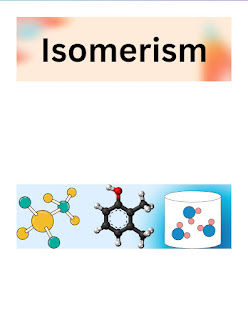Organic chemistry tutors topic isomerism.
Isomerism is a fundamental concept in stereochemistry that refers to the phenomenon in which two or more compounds have the same molecular formula but differ in their arrangement or spatial orientation of atoms. These compounds are known as isomers. Isomerism arises due to the diverse ways in which atoms can be connected or arranged in three-dimensional space, resulting in different chemical and physical properties.
In stereochemistry, there are two main types of isomerism: structural isomerism and stereoisomerism.
Structural Isomerism: Structural isomerism, also called constitutional isomerism, occurs when compounds have the same molecular formula but differ in the connectivity of their atoms. This type of isomerism can be further classified into various subcategories:
a. Chain Isomerism: Chain isomers have the same molecular formula but differ in the arrangement of the carbon skeleton or the length of the carbon chain. For example, n-pentane and isopentane are chain isomers.
b. Functional Group Isomerism: Functional group isomers have the same molecular formula but differ in the functional group attached to the carbon skeleton. For instance, ethanol and dimethyl ether are functional group isomers.
c. Positional Isomerism: Positional isomers have the same molecular formula but differ in the position of a functional group or a substituent on the carbon chain. An example of positional isomerism is exhibited by ortho-, meta-, and para-xylene.
d. Tautomeric Isomerism: Tautomers are isomers that interconvert by the movement of a hydrogen atom and the rearrangement of double bonds. The most common example is the keto-enol tautomerism, seen in compounds like acetylacetone.
e. Ring isomerism- The compond having same molecular formula but differ only in possesing open chain or closed chain are considered as ring chain isomers. The most common example are propene and cyclic propane, butene and cyclic butane .
f. Metamerism- The compounds having same molecular formula but different number of carbon atoms on either side of the functional groups are called metamers.
Stereoisomerism: Stereoisomerism arises due to the different spatial arrangements of atoms in molecules, while retaining the same connectivity. It can be further classified into two main subcategories:
a. Geometric (Cis-Trans) Isomerism: Geometric isomers have restricted rotation around a bond, resulting in different spatial arrangements. This type of isomerism is commonly observed in compounds with a double bond or a ring structure. Cis-trans isomerism is a well-known example, where two groups or atoms attached to a double bond or a ring can be arranged on the same side (cis) or opposite sides (trans) of the molecule.
b. Optical Isomerism: Optical isomerism, also known as enantiomerism, arises due to the presence of chiral centers in a molecule. Chiral molecules are non-superimposable mirror images of each other, like left and right hands. They exhibit optical activity, meaning they rotate the plane of polarized light in opposite directions. A chiral compound will have two enantiomers unless it possesses an internal plane of symmetry, making it achiral. Enantiomers have identical physical and chemical properties, except for their interaction with other chiral compounds and polarized light.
